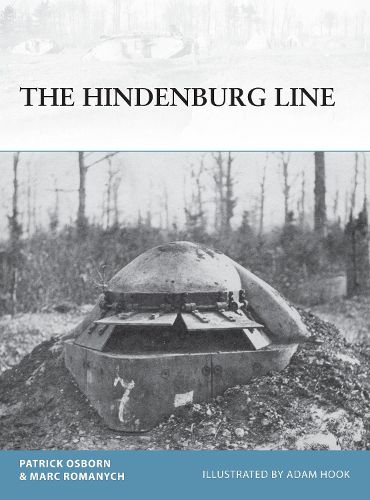Readings Newsletter
Become a Readings Member to make your shopping experience even easier.
Sign in or sign up for free!
You’re not far away from qualifying for FREE standard shipping within Australia
You’ve qualified for FREE standard shipping within Australia
The cart is loading…






Jagging across north-western Europe like an ugly scar, the Hindenburg Line was Germany’s most formidable line of defence in World War I. Its fearsome reputation was matched only by its cunning design, with deep zigzagging trenches, concrete fieldworks, barbed wire and devilish booby traps forming an intimidating barrier for any attacking army. Through meticulous research, this volume explores each of the major portions of the Hindenburg Line, paying particular attention to three examples of Allied operations against it towards the end of the war: the critical flanking of the Drocourt-Qeant Switch; the daring but costly rupture of the line of the St Quentin Canal; and the bloody battles of the Meuse-Argonne. Specially commissioned artwork and historical photographs perfectly complement the analysis provided by the authors as they trace the life of the Hindenburg Line from its seemingly invulnerable early years through to the audacious tactics used by the Allies to achieve a bitter victory in 1918.
$9.00 standard shipping within Australia
FREE standard shipping within Australia for orders over $100.00
Express & International shipping calculated at checkout
Jagging across north-western Europe like an ugly scar, the Hindenburg Line was Germany’s most formidable line of defence in World War I. Its fearsome reputation was matched only by its cunning design, with deep zigzagging trenches, concrete fieldworks, barbed wire and devilish booby traps forming an intimidating barrier for any attacking army. Through meticulous research, this volume explores each of the major portions of the Hindenburg Line, paying particular attention to three examples of Allied operations against it towards the end of the war: the critical flanking of the Drocourt-Qeant Switch; the daring but costly rupture of the line of the St Quentin Canal; and the bloody battles of the Meuse-Argonne. Specially commissioned artwork and historical photographs perfectly complement the analysis provided by the authors as they trace the life of the Hindenburg Line from its seemingly invulnerable early years through to the audacious tactics used by the Allies to achieve a bitter victory in 1918.